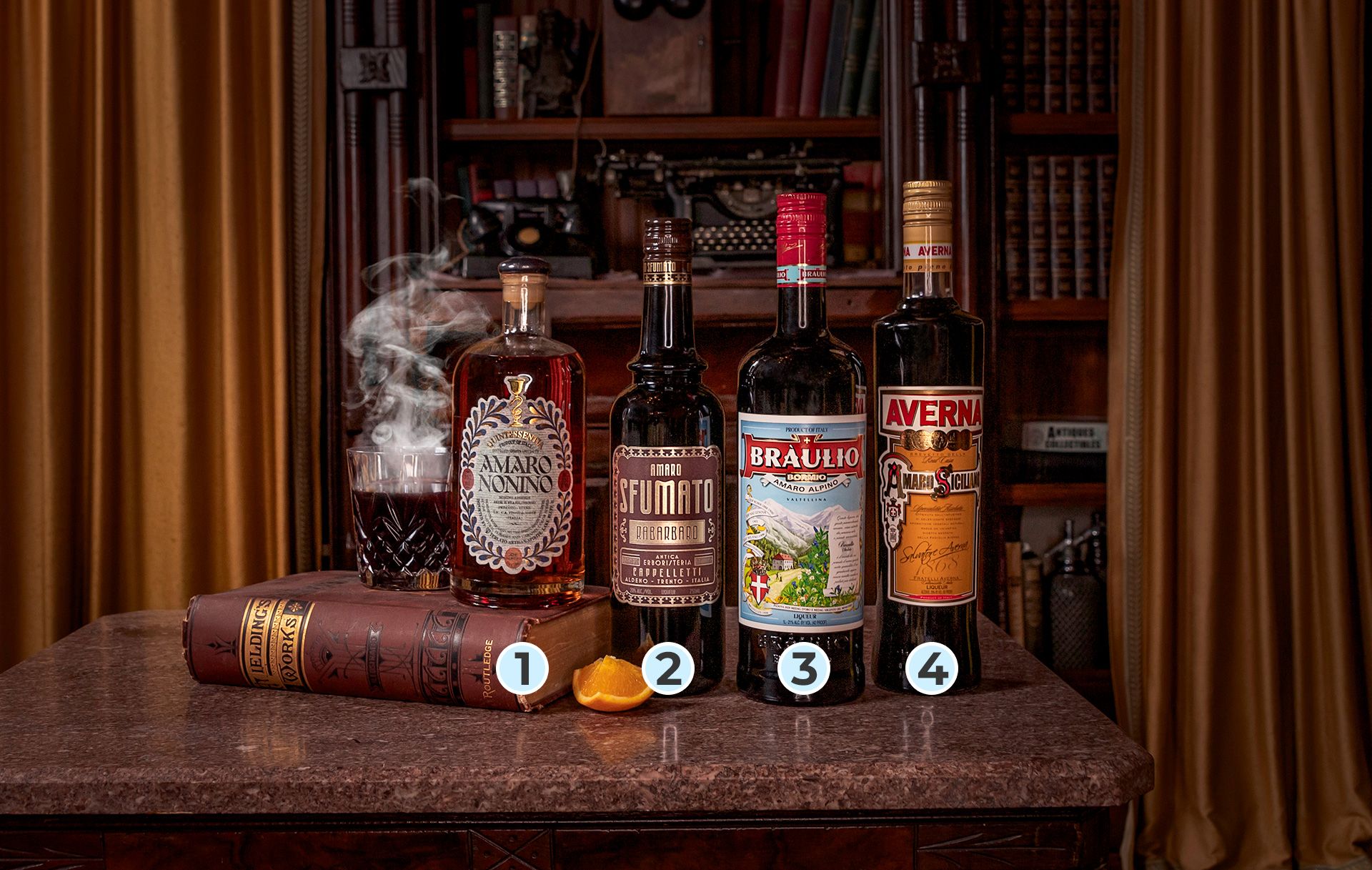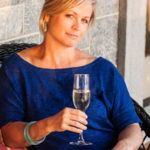This dark, sweet liqueur, first popularized by Italian monks and pharmacists—not dentists, alas—makes the perfect winter sipper in a variety of seasonal cocktails.
IF YOU’VE EVER savored a Negroni by the fireplace or an Aperol spritz in a sunny piazza, you’ve consumed amaro. Italy has long dominated production of the liqueur, with each region, from the Alps to Sicily, producing hyper-local versions.
The origin of the dark, sweet drink dates to medieval times, when monks and pharmacists, seeking a medicinal tonic, perfected recipes using bittering roots and herbs. In the early 1800s, these elixirs went commercial, and bottle labels still typically evoke the branding of a vintage Florentine pharmacy.
No regulations dictate the exact composition of amaro, though to be classified as such, a drink will have three layers: a sweetened alcoholic base like grappa, a bittering agent like gentian root and proprietary flavors based on fruits, spices and herbs. Amari provide wildly different profiles for endless cocktail combinations. Here are four that will elevate your tippling during the colder months.
LAUREN MOWERY, Incisal Edge’s spirits columnist, has covered the world through the lens of drink for publications including Wine Enthusiast, Forbes and Saveur.
1) NONINO QUINTESSENTIA
($55; 35% ABV)
Originating from Friuli in northeastern Italy near Slovenia, this amaro has long been drunk as a digestif by the locals. Based on grappa, the liqueur is infused with a blend of herbs, spices and roots. Flavors of earthy gentian, black licorice, tart rhubarb, sour tamarind and bitter orange unfold with each sip. Five years’ barrel aging helps meld flavors and mellow edges. The resulting amaro is lighter in color and less pungent and medicinal than many others.
2) AMARO SFUMATO RABARBARO
($25; 20% ABV)
Though “rabarbaro” means rhubarb, it’s the “sfumato” that informs the profile of this complex amaro from Italy’s Trentino-Alto Adige, a region abutting Switzerland and Austria. Derived from the Italian word fumo, it heralds a gentle smokiness across waves of bright, sweet berries. The producer, Antica Erboristeria Cappelletti, established operations in 1909; today, fourth-generation family members oversee production, sourcing ingredients including Chinese rhubarb, which grows in the region.
3) BRAULIO
($44; 21% ABV)
This pine-scented liqueur tastes of winter holidays in the Italian Alps. Created in 1875 by pharmacist Francesco Peloni, Braulio comes from the picturesque Valtellina valley, near the Swiss border. The blend comprises 13 aromatic herbs, berries and roots, creating a rich, layered, bitter backbone to support a pine-needle, minty-sweet body. A base of grappa lends bite and depth. Sip it neat.
4) AVERNA
($31; 29% ABV)
If Braulio embodies Italy’s mountainous north, Averna is pure Mediterranean isle. Created by the Capuchin abbey of Caltanissetta in Sicily 150 years ago, the recipe remains a secret. Essential oils of lemon and bitter orange in this complex blend taste of the rugged, sun-drenched Sicilian landscape. Luscious and rich, boozy and a touch medicinal, its velvety texture layered with ribbons of dark chocolate.

CHICAGO FIRE EXTINGUISHER
INGREDIENTS
2 OZ. SCOTCH
0.5 OZ. AMARO
0.25 OZ. CRÈME DE NOYAUX
2 DASHES SMOKED BITTERSOPTIONAL
HICKORY WOOD CHIPS
TO MAKE
- Add all ingredients except wood chips to a mixing glass filled with ice.
- Stir and double-strain into a bottle that can be sealed with a cork or cap, making sure to leave space in the bottle. (If you’re not using a smoking gun, strain the cocktail directly into a glass filled with one large ice cube.)
- Uncork the bottle. Following the instructions of your smoking gun, add hickory smoke into the bottle and re-cork. Infuse for a minute before pouring into a glass filled with one large ice cube.
Shot on location at the Frederick Stegmaier Mansion
304 S. Franklin St., Wilkes-Barre, PA 18702
570.823.9372; stegmaiermansion.com




